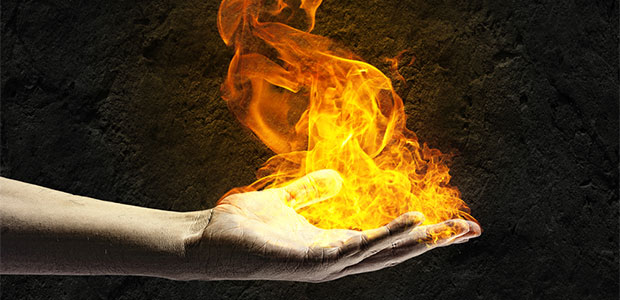
Flash Fire Protection Now Extends to Hands with NFPA 2112:2018 Certified Gloves
There is no reason for hands and fingers to be less protected than the rest of the body.
- By Eric Jaeger
- Dec 01, 2021
Flash fire is a serious hazard in many workplace environments. Workers in the following industries could be exposed to locations that are at risk for flash fire: chemical processing, petrochemical processing, storage & distribution, oil and gas drilling, even certain production and material handling facilities.
Flash Fire Selection and Testing Standards for PPE
A flash fire is a sudden, intense fire caused by ignition of a mixture of air and a dispersed flammable substance such as dust, gas or the vapors of an ignitable liquid. It is characterized by high temperature, a duration of typically three to six seconds and a rapidly moving flame front. A flash fire can cause extreme heat and burn injuries to people, which can often be fatal. Facility safety professionals spend countless hours on prevention programs to reduce the potential of a flash fire incident. While they are a rare event, the results are so destructive that employees at risk for flash fire exposure are typically required to wear flame-resistant clothing that is specifically designed to protect, as much as possible, from serious injury and death.
The use of flash fire PPE in the safety industry is determined by analyzing jobsite hazards utilizing the NFPA 2113 Standard on Selection, Care, Use and Maintenance of Flame Resistant Garments for Protection of Industrial Personnel Against Flash Fire (2018 Edition). This standard is an OSHA recognized tool for flash fire protection; it involves performing a fire hazard assessment and choosing personal protection that meets the specifications set forth in the NFPA 2112 testing standard.
NFPA 2112:2018, titled “Standard on Flame-Resistant Clothing for Protection of Industrial Personnel Against Short-Duration Thermal Exposures from Fire,” is utilized by manufacturers of personal protective garments. NFPA 2112 sets the minimum performance criteria for flash fire rated FR fabric, thread, hardware and labels and certain design criteria. It includes multiple, separate tests on the fabrics, components and complete garment including flame resistance, heat resistance, thermal shrinkage, heat transfer performance, launderability and percentage body burn. All garments must be tested, certified and then retested and recertified annually by an authorized testing body such as Underwriter’s Laboratory (UL). Production facilities are audited for quality control standards up to four times per year, and finally, a high durability label will be affixed to the garment, signifying its approved status.
The National Fire Protection Agency first issued NFPA 2113 and NFPA 2112 in 2001. Both standards have been updated several times in the past 20 years; surprisingly, though, gloves were not included in either one until recently. Gloves were included in NFPA 2112 in 2018, and they were included in NFPA 2113 in 2020. Due to the omission of gloves for so many years, workers hands have not been protected from flash fire incidences.
Many people have wondered why gloves were not included in the flash fire selection standard or testing protocol. After all, if a person survives a flash fire incident but their hands are badly burned due to the lack of properly tested and certified flame protection, they will most likely never be able to return to work again in the same capacity. Hands are typically the most critical functioning element for your workforce. There is no reason for hands and fingers to be less protected than the rest of the body.
Glove Testing Challenges
So why were gloves just recently included in flash fire standards? The answer lies in the details of the testing protocol, and the major differences between the construction of gloves versus the construction of clothing. An FR garment is typically constructed of a single type of fabric, cut into large swatches and sewn together in flat seams. Gloves, on the other hand, are made from a wide variety of fabrics that could be man-made or natural, knit, woven or non-woven, with multiple layers that are often different from the palm to the back of the hand. Some fabric and material swatches can be very small, sewn into three dimensional seams, while other gloves have no fabric swatches at all. They are constructed of engineered and natural yarns, knitted directly into a glove shape on computer controlled machines, before being dipped into polymer solutions. Impact protection, knuckle panels, palm reinforcements, inner liners, etc. all complicate matters even further. In effect, gloves present an extremely difficult testing regiment compared to garments.
In fact, even after gloves were included in the testing standard in 2018, almost three years passed before a single glove successfully passed the NFPA 2112:2018 standard for flash fire protection. I was fortunate enough to have first-hand knowledge of that process. Engineers from four safety companies, each with unique industry expertise, came together to tackle this difficult yet very important hand safety issue.
They dissected each step of the testing process and created the right methodology for testing every panel, every layer and every thread of the glove according to each of the applicable test sections: flame resistance, heat resistance, thermal shrinkage, heat transfer performance and launderability. It was a detailed, time-consuming, science-driven and, ultimately, very rewarding process. Not only did the collaborative effort result in the first ever NFPA 2112:2018 certified glove, the Heatworx Heavy Duty FR, but it paved the way for future NFPA 2112 glove certifications.
For the first time ever, you now have the ability to protect two of your workers most valuable assets, their hands, from flash fire hazards. While there is only one glove option today, thanks to the work of this pioneering group there will be more options in the future. So the next time you are creating a workplace safety flash fire protection program, include NFPA 2112 certified clothing and gloves for your employees. They will certainly thank you.
This article originally appeared in the November/December 2021 issue of Occupational Health & Safety.